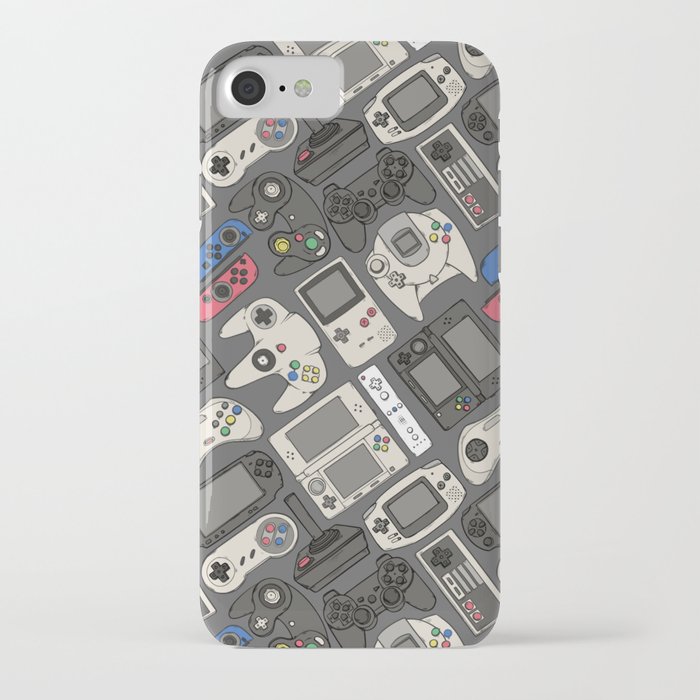video game controllers in true colors iphone case
SKU: EN-L10084

video game controllers in true colors iphone case
AT&T subscribers who own the HTC One should keep an eye out for Android 4.3. On Tuesday, AT&T confirmed that it has officially started pushing the latest flavor of Jelly Bean to HTC's flagship phone. HTC One owners should see a notification that the update is available for download. Users can also manually check for the update by tapping the setting for AT&T Software Update and then choosing the option to Tap Check for Updates. After the update has installed, the phone will automatically restart.
Everything connected, Tang hands over the device and helps get it adjusted, Retinal projection requires precise alignment and optical focusing, a major engineering challenge that has pushed other companies toward simpler technologies when creating wearable displays, (Including Google, which considered retinal projection for Glass.) Avegant seems to have solved that problem in two ways: a frame that expands to accommodate different face widths and high-quality optical elements that can be video game controllers in true colors iphone case individually adjusted, Where most wearable displays have crude, fixed optics, Avegant's eyepieces wouldn't look out of place at an ophthalmologist's..
Once properly aligned, the resulting image is compelling. The device offers a separate WXGA (1,280x768-pixel resolution) image for each eye, basically twice the effective resolution of current Oculus Rift developer kits. This means a crisp, clear image and, because of the nature of the projection's micromirror array, there's no screen door effect. Pixels seem to blend together seamlessly, creating an incredibly bright and vibrant image. Most impressive, however, is how comfortable the device is to wear. Not physically -- it's heavy, and all that weight rests squarely on your nose -- but rather in terms of eye comfort. Traditional wearable displays use optical tricks to provide some degree of eye relief, but you're still trying to focus on a display that's fairly close to your eyes. With Avegant's prototype there simply is no display. Your eyes completely relax and let the optics do the work of focusing. After staring at an LCD for hours, it's actually refreshing to gaze into this prototype.
This was one of the core concepts of the device, which grew out of a military request years ago to create a display that provided thermal imaging in a wearable package like traditional night vision goggles, Allan Evans, Avegant co-founder and CTO, fielded that request, "I was looking around and one day I realized that we don't stare at things that glow, we stare at light, So I started looking at how light actually is perceived, and I connected with an optics researcher and we started building giant boxes to prove the concept, It ended up working and we tried to miniaturize it."Indeed, the military was an early target for this device, as well as the medical field, providing a new interface for endoscopic surgery, The concept of a consumer application came later, In fact, Avegant as a company has only existed since January of this year, when CTO Evans and CEO Tang received their first funding thanks to nothing more than a skillfully delivered presentation, "We had a PowerPoint and a lot of very trusting people who believed in us," said Evans, "Then we video game controllers in true colors iphone case really went to work."The first fully functional prototype of the headset came together on July 6 of this year, while the current version you see here dates to September, Evans downplays this speedy progress: "We've been moving very quickly." The challenge had been getting the optics and the core mechanics of the device in place, Now, the focus shifts toward creating a device that not only is comfortable but that doesn't look as embarrassing as the current version, Tang calls this "physical comfort" and "environmental comfort," saying, "It has to look right and it has to feel right." To get there, Avegant is working with industrial design consultants, shaping this thing into a device you wouldn't mind having on your face in public..
And yes, Avegant's execs think this is a device for public use. While Oculus Rift-style virtual reality is certainly possible, the company is currently leaning more toward mobile video entertainment. Tang cites the phablet phenomenon as a sign that people want bigger, better displays to enjoy their content on when on the go. "Fully immersive virtual reality is really cool, but that's not something you're going to use while traveling or out of the home. We're trying to make something that you can wear comfortably for hours, that you can wear on an airplane.. mostly because I want to watch movies on airplanes."But it'll need to offer more than that, much more, if it wants to find more success at market than any of the previous personal entertainment wearable displays have achieved. (Remember the MyVu? Or the HMZ-T1)? That's partly why the company has brought on Yobie Benjamin, former CTO of Citigroup, to head up software operations, creating the necessary hooks and APIs so that developers can quickly and easily get up to speed.
- best apple ipad accessories outlet online
- iphone case speck
- iphone 6 case with card holder
- l v iphone x case
- evil eye collection on white iphone case
- blue moon iphone case
- paws! iphone case
- ballet shoes and abstract circles prints ~ set of 2 prints~instant download~large wall art~bed room and living room decor~ballet
- mary jane ballet flats in black leather | pointe style shoes | classic model | standard width | black mary janes | ready to ship
- personalised embroidered junior ballet dance bag-leotard shoes school slippers bc 2 personalized dance bag
- i'm a ballerina dancing school ballet shoes sticker decal *e134*
- More...
